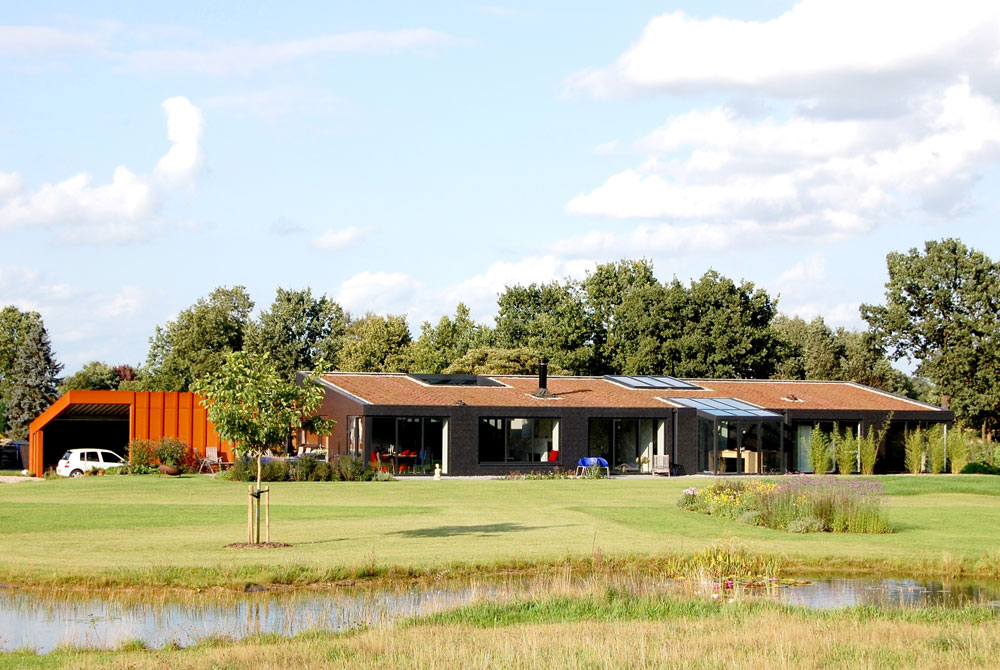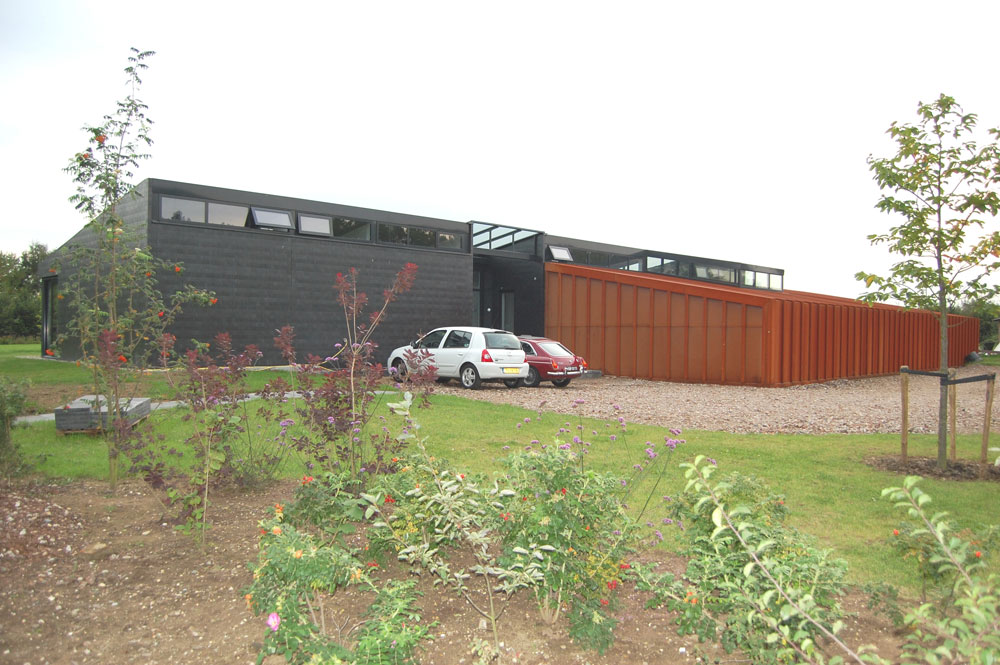Lars Courage
BackA colourful passion for metal

According to the Dutch architect Lars Courage (°1968), of the architect’s firm Courage Architecten from Apeldoorn, he has two great passions: metal – as a collective term for various types of steel - and glass. But when you talk with him about his work, you soon discover a third passion: colours. For Lars Courage metal and colour are the perfect combination through which he can translate his architectural inspiration into reality, certainly when both are combined in prepainted metal. Courage Architecten champions plain and robust buildings, but whoever only associate them with office districts or urbanised areas is wrong. It is also thanks to Lars Courage that prepainted metal has been discovered in the country. |
What inspires you most as an architect?
Lars Courage: As an architect I constantly look around me. I study forms and materials, not only in the building industry, but also, for example, in the automobile industry, fashion or yacht sector. What I see I try to integrate in the forms and materials I use in my own work. In the first place I am a technical architect. I obviously consider the aesthetic aspect of architecture, but I also want to know exactly why and how something is done. I think this is necessary to innovate.
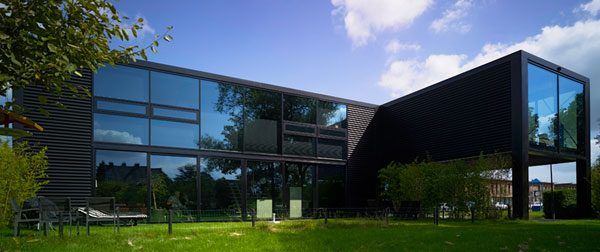
One of the websites I regularly consult is www.thecoolhunter.net. It discusses various subjects such as eating, travelling and the environment, and therefore reflects current society in a clear way. Because I can find all subjects combined, I can easily apply the same line of approach to current architecture. After all, everything is connected to each other. This also applies to the present and the past. For example: I recently saw a synthetic floor in Sweden, which consisted of elements that were rhythmically woven into each other. It was a pattern from the medieval Swedish weaving industry, that was first applied for synthetic material and then for floor covering. That’s how I also work. I also examine other disciplines and when I see something that inspires me, I find out how it works. Then I try to apply it to architecture.
A tough combination of steel and glass is typical for the offices of Courage Architects in Apeldoorn.
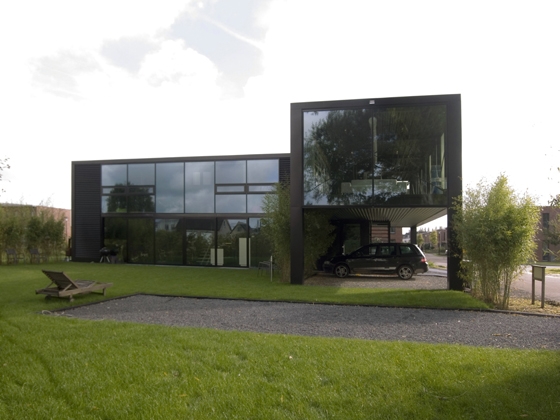 |  |  |
Click the pictures to enlarge them...
You say that you regularly consult websites. Is the internet such an important source of inspiration?
Certainly. In recent years a number of websites have made classic photo books available online. I sometimes call it 'architect porn', because it is full of appealing photos. Every day new photos are placed there from all over the world, from minor to major projects. For example, www.archdaily.com and www.notcot.com. Such digital photo archives are very useful for various reasons. They are easy to consult, and the illustrations can be saved in your own archive, so that you can also show them to your clients.'
In recent years Courage Architecten has also been very interested in metal. Why is this?
It is no coincidence that this fascination for metal is the result of a previous fascination, that is to say, glass. The large openings in facades with glass can be expressed optimally with metal, and with steel as a main supporting construction. It all has to do with the nature of the buildings that we design. From all the inspiration we gain we create a plain and robust architecture – not the type of architecture that has to be explained. 'Plain' means cutting out the frills. The key aspect is the essence of the building. So the shell of a building is often synonymous with dismantlement in this approach. 'Robust' means that you have to capture the essence of a building in three or four pencil lines, whereby the spectator immediately understands the essence of the building as a whole.
Recently I heard about the term 'nude rawness' in this context, and it perfectly fits what we are doing. You can look into our buildings. You can see their structure. But at the same time details are very important. It may seem contradictory, but we are real nitpickers with regard to these details. When something goes wrong in the implementation of details, everything may go wrong.
The combination of glass and metal is very popular nowadays. Do you consider yourself as a kind of precursor of this trend?
Since our firm started in August 2001, we have worked on the basis of this philosophy and tried to use the materials of metal and glass to a maximum degree. My former work was also completely in line with this. Nowadays it has indeed become a trend in modern architecture, so that I dare to say that our style and approach have turned out very well.
What is the attractiveness of metal as a building material?
To start with, metal is robust. You can of course also build robust buildings with concrete or brick in combination with glass, but concrete and brick have a much coarser texture. Metal is also much more elegant, you can also use it in a much more plastic way and it also offers many more options with regard to colours. It is also sustainable and saves energy. In the traditional building industry walls have become thicker and thicker, with more insulation, all for the sake of a required high insulation value. However, the heat that is accumulated in a building as a result of this will have to be discharged again. On the other hand, metal absorbs heat quickly, but also discharges it quickly. Our approach disregards the accumulating capacity, and is therefore much more energy-conscious.
Metal is also interesting from a cost perspective: it is a relatively cheap material. When a person wants to build a house in countries such as Belgium, he first goes to an architect, because he wants something beautiful and special. A Dutch person would immediately go to a contractor, because he first of all considers the financial aspect. But this is changing. In the Netherlands the economic aspect remains important, but the focus on aesthetic aspects is increasing. Metal, in combination with glass, is a perfect answer to this. By considering the optimal applications of metal and glass, you can realise special projects without exceeding the restrictions of the budget.
Bag-A-Box: a trendy and affordable home.
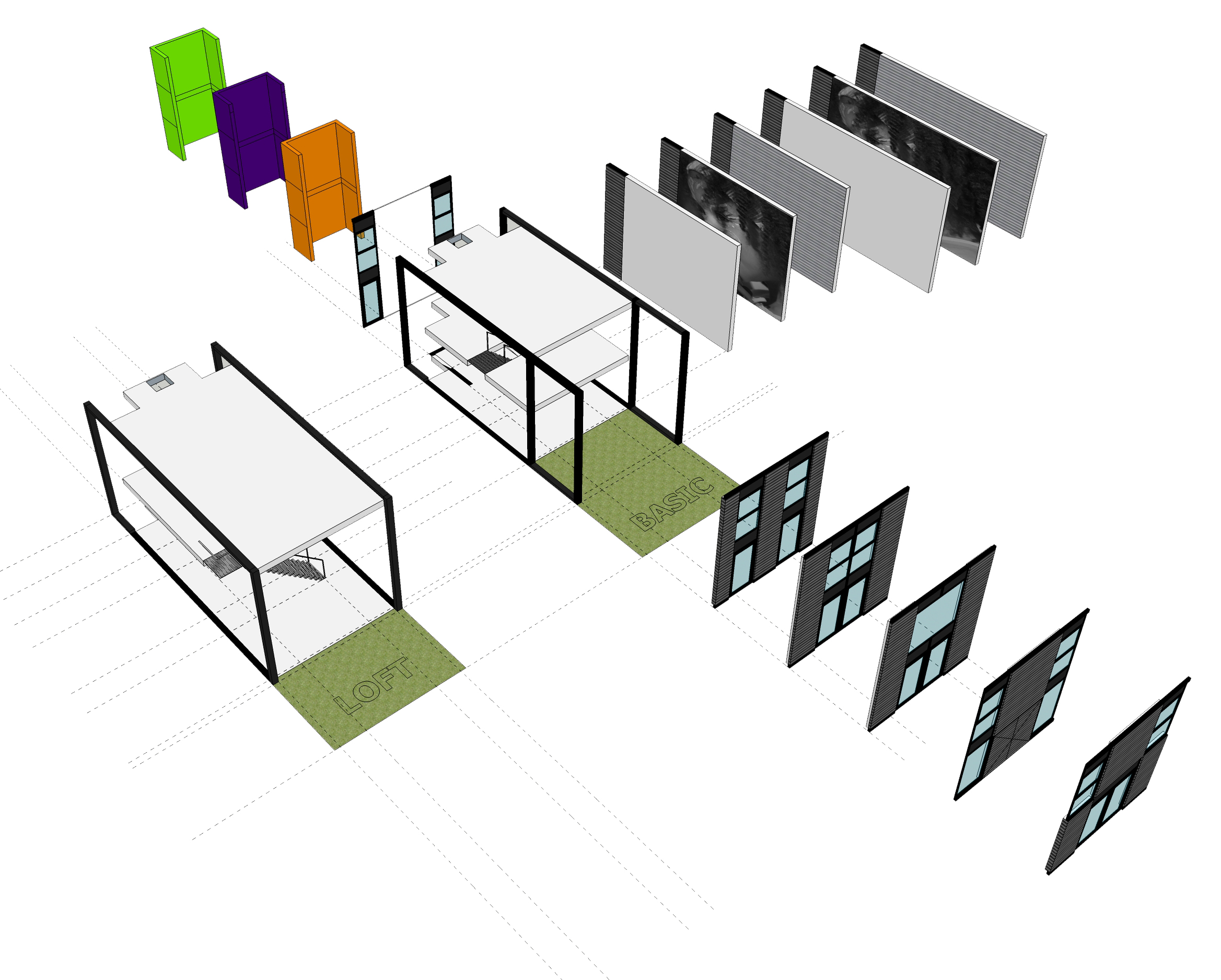 | 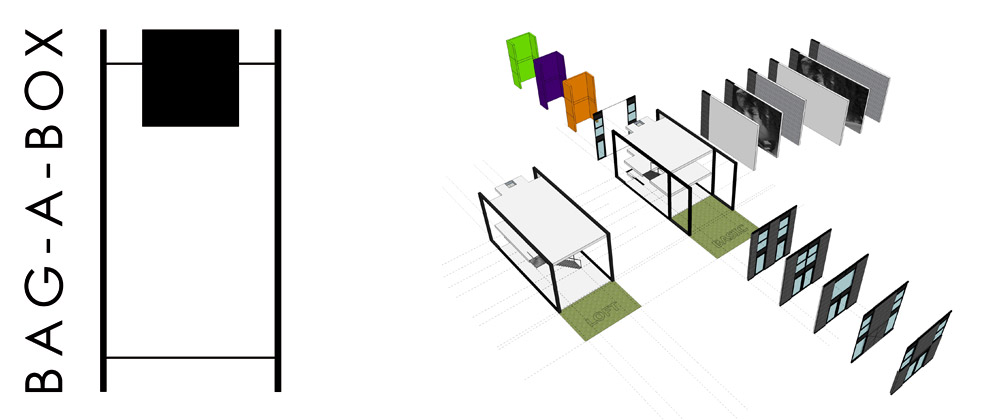 | 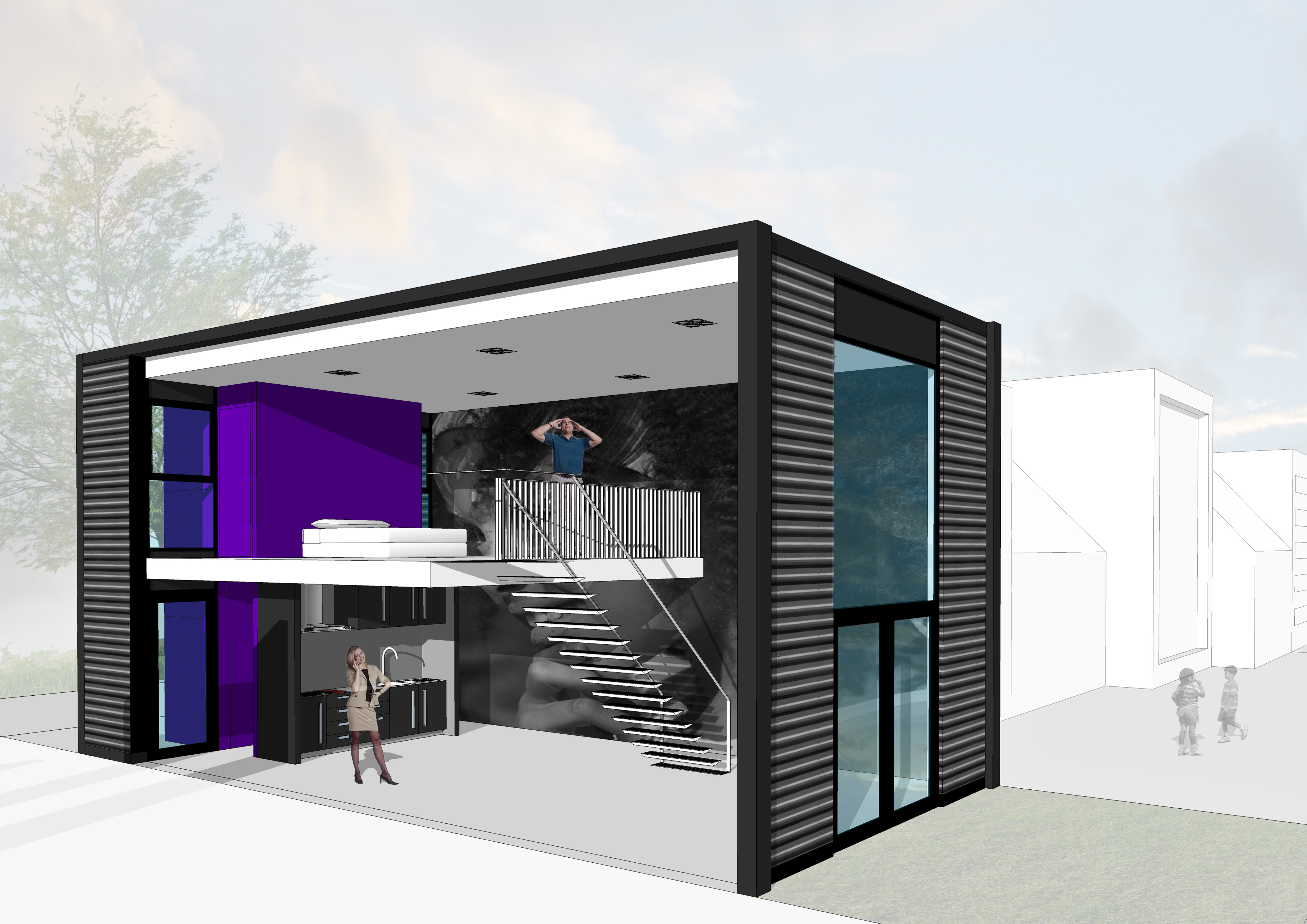 |
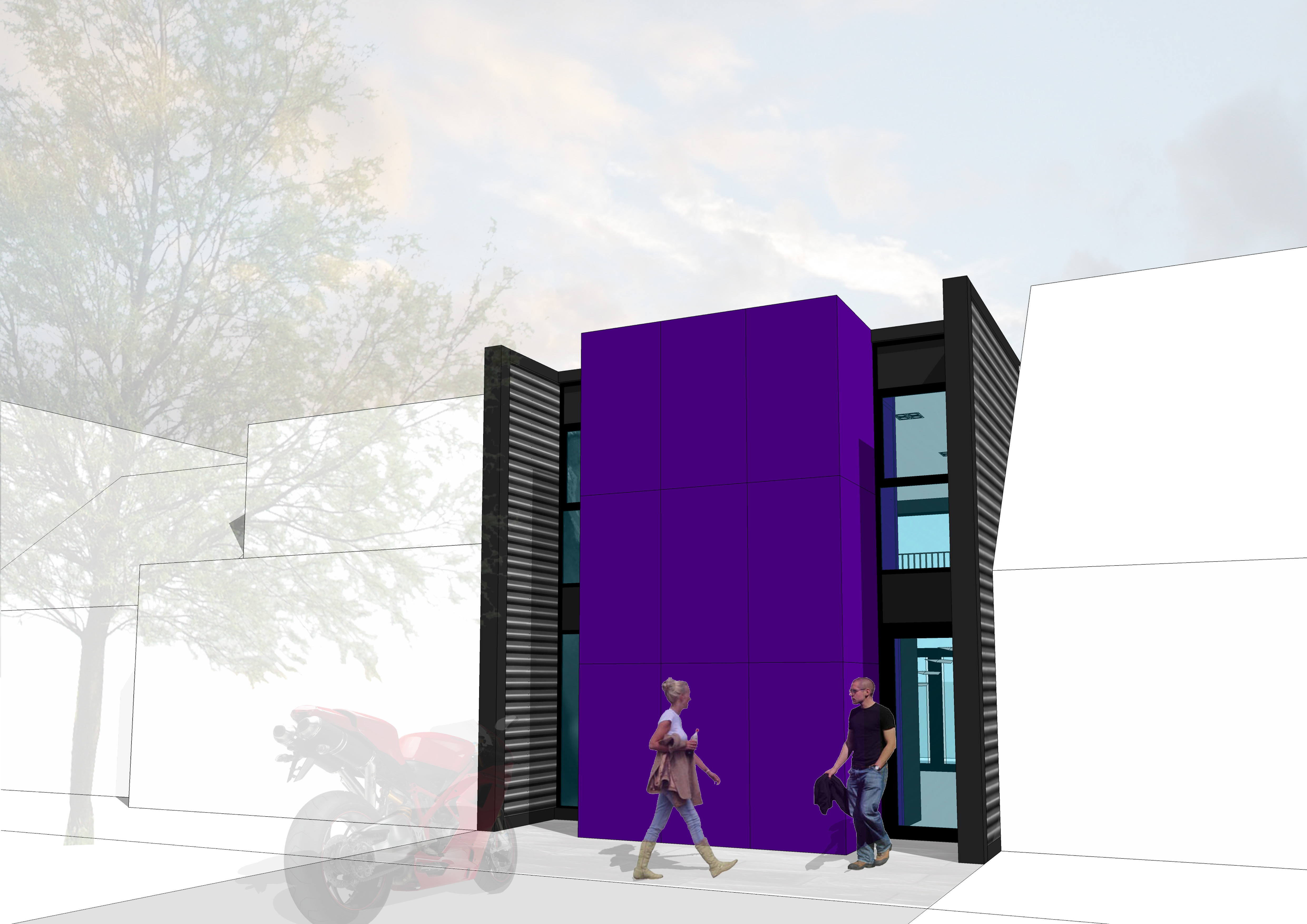 | 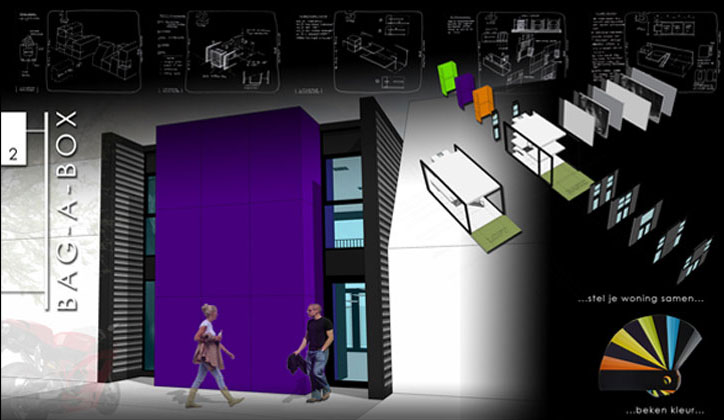 | 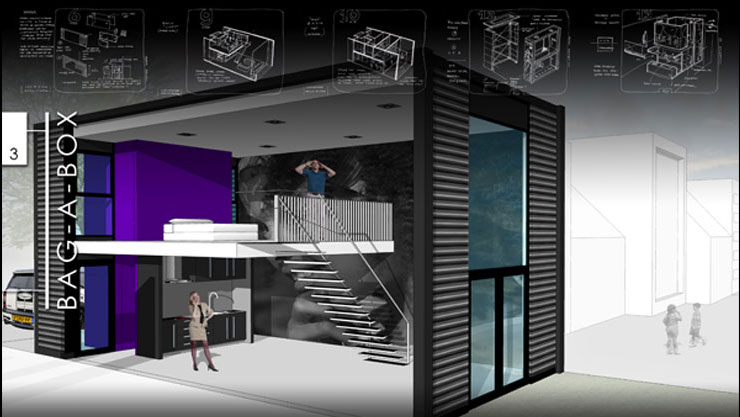 |
You just mentioned the importance of colours when using metal. What are the advantages of prepainted metal?
To start with, painting flat panels at a later stage is absolute 'not done'! This is only justifiable when you have construction metal with small surfaces, whereby building damage has to be concealed, for example. For panels it is impossible to equal the sheen of prepainted metal. Moreover, you can never achieve the quality of the coating structure, with its built-up layers. Another advantage of prepainted metal is that it is a relatively new product in the building industry, so that we as architects can use it in an innovating way. In this respect I would like to mention that I hate coating producers who, for example, try to imitate woodgrains. If you want to use an existing material, use the original and let metal be 'metal'!
The way in which you deal with colours is very experimental, while the Netherlands is a country that prefers soft tints.
Colours are actually country-bound and culture-bound. In Great-Britain natural colours prevail, while yellow, hard red and hard green are more popular in the Benelux. Colours are also fashionable. For example, light pink or dull yellow were dominant in the 1950s. In the 1970s 'Smarties' colours were popular, while nowadays vivid fluorescent neon colours are fashionable. At Courage Architecten we go much further, for example by using colours that change depending on the angle at which you look at colours. Colours that evolve from black to white, or from orange to red. Everywhere around us we see vivid colours on the street, for example in clothing and in advertising. We think that this demand for vivid colours can also be met in the building industry, but without making them into garish colours.
By using the right colours, we as architects can also combine different 'worlds' with each other. For example, we work together with a large steel producer to place the skin colours of a well-known Austrian motorcycle manufacturer on steel, so that we can transfer them to facades. To our great surprise they were immediately impressed with this idea, and we were allowed to use their patented colour. So you see, we are always creatively looking for new applications as an architect. Prepainted metal is ideal for this. It is a pleasant material that always offers new challenges.
The use of glass and metal is often associated with industrial buildings. It appears to be less suitable for building houses in the country.
With 'sustainable' do you mean that your buildings should withstand the ravages of times?
Well, I am not of the opinion that everything should last for eternity. Most cars from the past have also disappeared from the streets – although some have fortunately been preserved for collectors. The sustainable quality of metal mainly involves its recyclability. I also noticed that there is an increasing focus on recycling the used coatings. For example, the furniture maker Thonet collects the dispersed paint in his paint train and recycles it for hundred percent. This paint would have otherwise been lost. I hope that the metal industry will also follow this trend.
In short, prepainted metal only has advantages in your opinion?
As an architect I can use it in an innovating way. It is an expressive material, which is also environmentally friendly, sustainable and recyclable. So the answer is: yes.
Foto's:
| 1 | Lars Courage |
| 2,3,4,5 | Courage Architects own office: 'A tough combination of steel and glass is typical for the offices of Courage Architects in Apeldoorn.' |
| 6,7,8,9,10,11 | Bag-A-Box (projectnumber 827): 'A unique collaboration and vertical integration between Courage Architecten, Reusken Bouw and Corus Starframe Solutions resulted in the Bag-A-Box, a trendy and affordable home.' |
| 12,13 | Home Kwakkel in Wenum Wiesel (projectnumber 604): 'This new farmer barn in Wenum Wiesel (Gelderland) combines the traditional black colour with contemporary materials such as prepainted metal.' |
